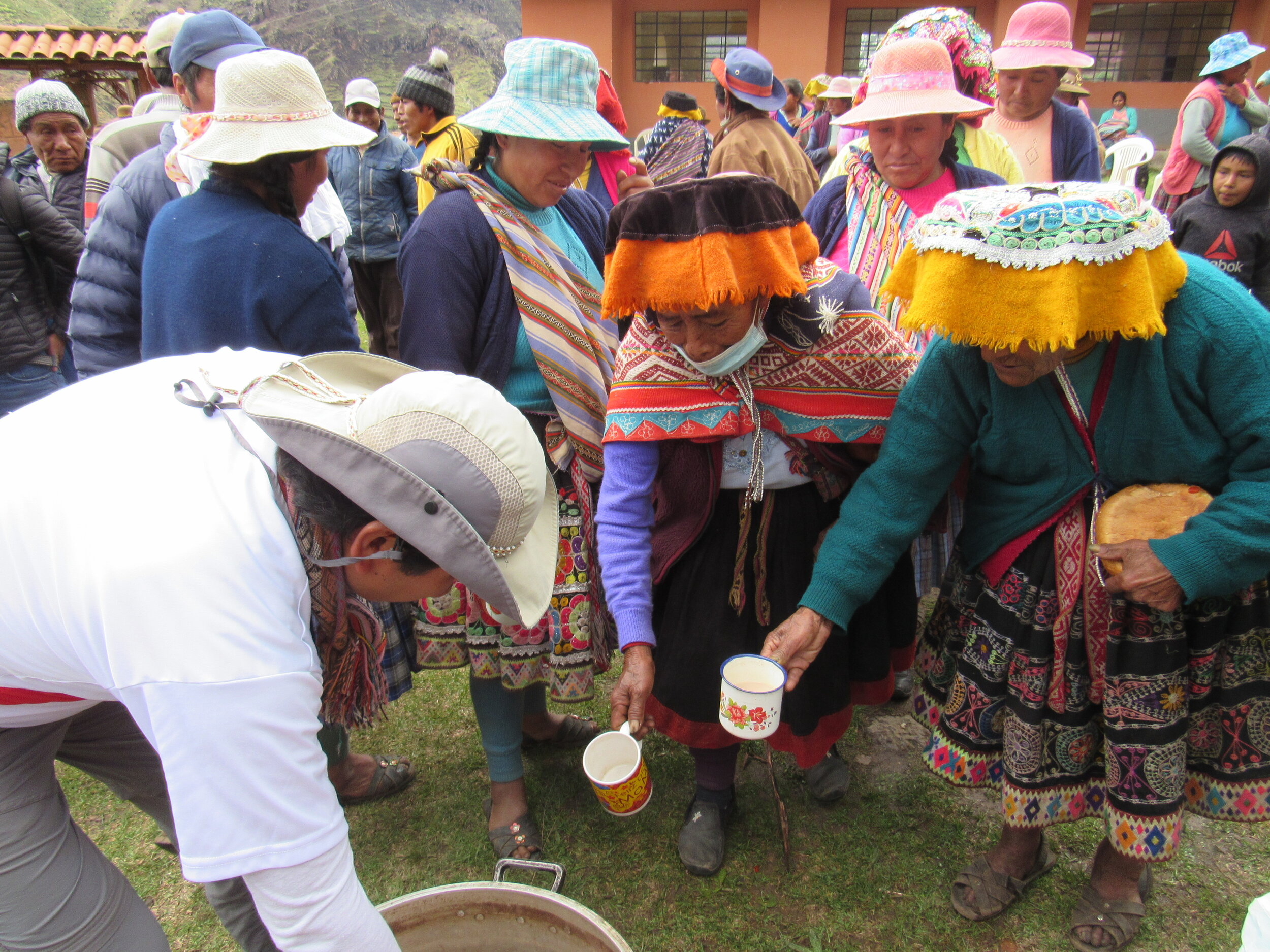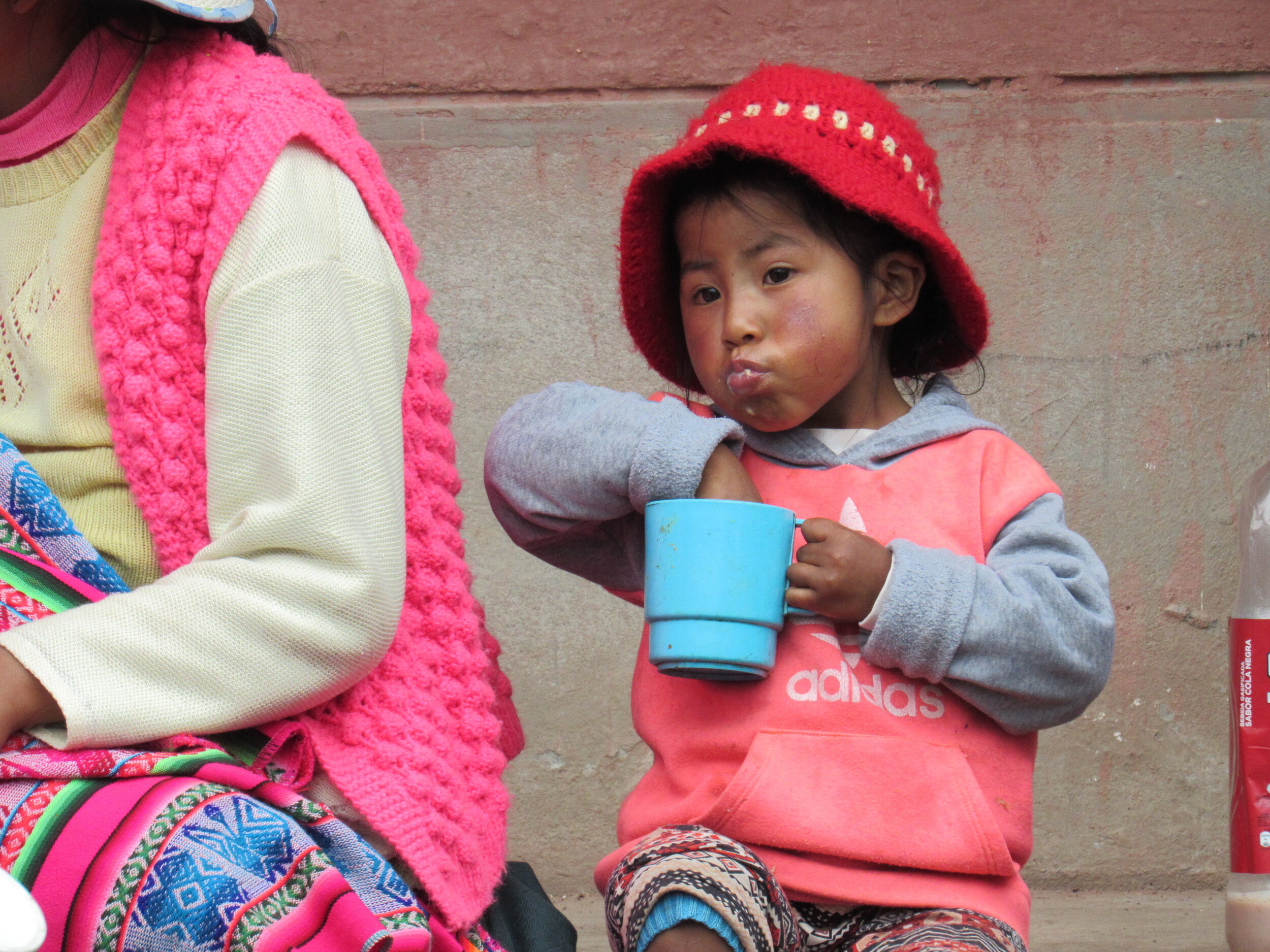Siusa chocolatada
Our sixth and last chocolatada was a beautiful day! Just under three hours from Cusco is the village of Siusa. The community has electricity in some homes, and most have a well nearby. However, the closest healthcare access is over an hour away, in Pisac. There is a primary school but several parents told us that the teacher did not visit once during the 2020 school year. During the pandemic, all students were supposed to stay home and access the national curriculum by internet, public tv channels or public radio stations. Siusa does have radio, but teachers are still supposed to check in with students regularly, collecting completed assignments and giving feedback on previously collected work. Many small communities are ignored by local governments, especially the more isolated mountain communities. Unfortunately, nobody advocated for the children of Siusa during the pandemic and they did not get the support that they needed.









As with our other five chocolatadas, we started out the day by distributing clothes to children, while the hot chocolate was being made. When we arrived the community had two giant cauldrons of boiling water ready. We added 30 liters of fresh milk to each, along with a one kilo bar of pure cacao, a handful of cloves and several cinnamon sticks. We always make sure that they bring the milk to a boil, since we buy unpasteurized milk directly from a dairy.
Everybody had been instructed to bring a mug and while not everybody had a mug, some had bowls or even old soda bottles. We made sure that everybody got hot chocolate and panettone before we let the children have seconds on the hot chocolate.






















After the chocolatada, the community president asked one representative from each family to come receive the food donations. Each family received 5 kilos of rice, 2 kilos of sugar, 1 kilo of salt and 5 bags of oatmeal. We buy salt with iodine and fluoride, two elements that are not present in the normal Andean diet of potatoes, corn and quinoa. Many of the villages that we visit are at such high altitude that they can only grow potatoes and are hours from the nearest market where they could trade for corn or quinoa.
We finished distributing the donations around noon and were invited by Jacincto, the regidor from Calca, for something to eat. We were each served four boiled potatoes and a fourth of a roasted guinea pig. Almost every community wants to share something with us after we finish the activity. They share what they can, which for some communities is only boiled potatoes or boiled corn. Whatever it is, we are always happy to be able to take some time to talk with the community leaders. It’s our opportunity to ask more about how the pandemic has impacted them and what services are available in the village. None of the villages that we’ve visited has a pharmacy, government clinic or hospital nearby. Most of them do not have any kind of public transportation and leaving the community is very difficult. More importantly, every one of them has managed to stay so isolated that they do not have any cases of Covid. We hope that they all manage to stay safe until the Peruvian government can distribute a vaccine.
As always, I am so, so, so grateful for all of the people who donated to make this possible! I am also very thankful for the help of all of our volunteers here in Cusco! Henry & Auqui have done all of the organizing with all of the local governments for each of these events, working with ten different mayors offices and town halls. Today we also had Auqui’s nephew James and niece Blanca helping. Henry brought his cousin Franklin and friend Meliza to help as well. Sair Camargo Luque, who came to help at the village of Marampaqui on December 19th, also joined us for the day. It makes such a huge difference to have so many hands able and willing to pitch in for everything from hauling bags of rice to distributing clothes. ¡Muchísimas gracias a todos!























